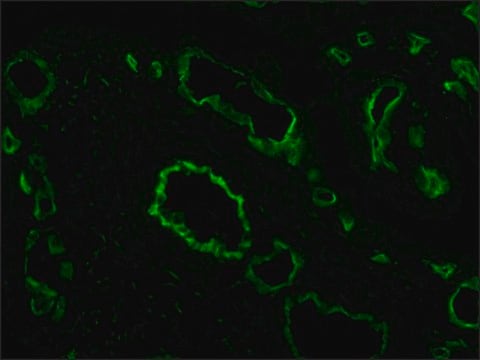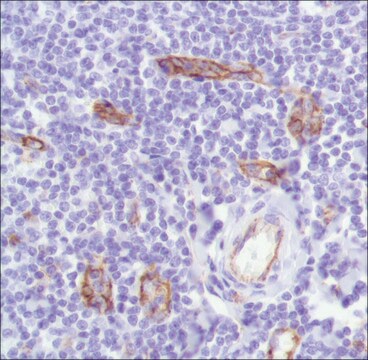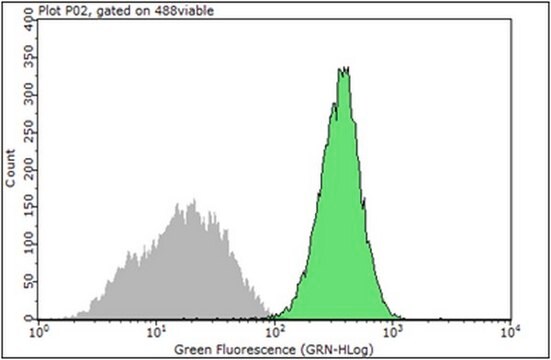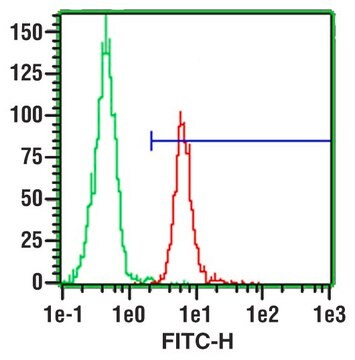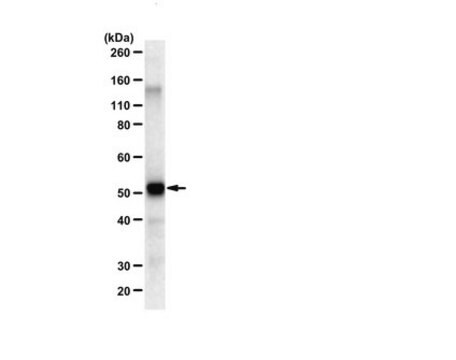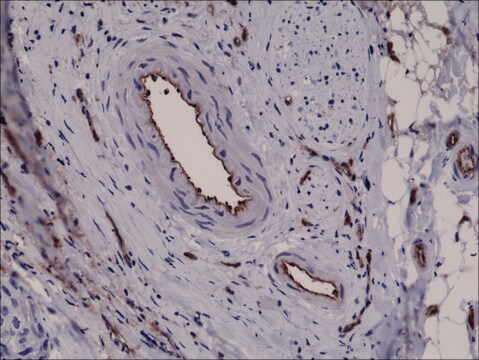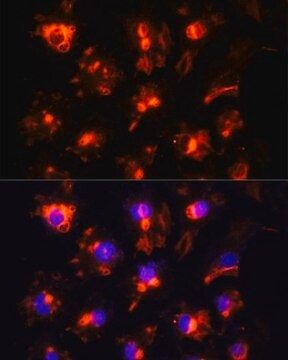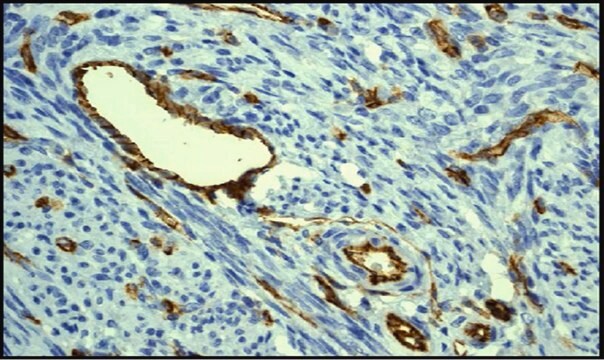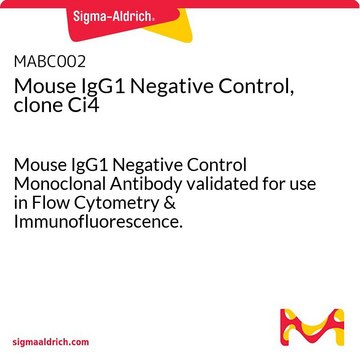CBL1337
Anti-PECAM-1 Antibody, clone 390
clone 390, Chemicon®, from rat
Sinônimo(s):
CD31
About This Item
Produtos recomendados
fonte biológica
rat
Nível de qualidade
forma do anticorpo
purified immunoglobulin
tipo de produto de anticorpo
primary antibodies
clone
390, monoclonal
reatividade de espécies
mouse
fabricante/nome comercial
Chemicon®
técnica(s)
flow cytometry: suitable
immunohistochemistry: suitable
immunoprecipitation (IP): suitable
Isotipo
IgG2aκ
nº de adesão NCBI
nº de adesão UniProt
Condições de expedição
wet ice
modificação pós-traducional do alvo
unmodified
Informações sobre genes
human ... PECAM1(5175)
Descrição geral
Aplicação
Immunohistochemistry: acteone fixed frozen tissue sections
Immunoprecipitation
Blocking of cell adhesion: CBL1337 inhibits aggregation of L cells transfected with a variant form of CD31 (DeLisser, 1993)
Optimal working dilutions must be determined by the end user.
forma física
Nota de análise
Jurkat and Raji cells, tonsil tissue
Outras notas
Informações legais
Não está encontrando o produto certo?
Experimente o nosso Ferramenta de seleção de produtos.
Palavra indicadora
Danger
Frases de perigo
Declarações de precaução
Classificações de perigo
Repr. 1B
Código de classe de armazenamento
6.1D - Non-combustible acute toxic Cat.3 / toxic hazardous materials or hazardous materials causing chronic effects
Classe de risco de água (WGK)
nwg
Ponto de fulgor (°F)
Not applicable
Ponto de fulgor (°C)
Not applicable
Certificados de análise (COA)
Busque Certificados de análise (COA) digitando o Número do Lote do produto. Os números de lote e remessa podem ser encontrados no rótulo de um produto após a palavra “Lot” ou “Batch”.
Já possui este produto?
Encontre a documentação dos produtos que você adquiriu recentemente na biblioteca de documentos.
Nossa equipe de cientistas tem experiência em todas as áreas de pesquisa, incluindo Life Sciences, ciência de materiais, síntese química, cromatografia, química analítica e muitas outras.
Entre em contato com a assistência técnica